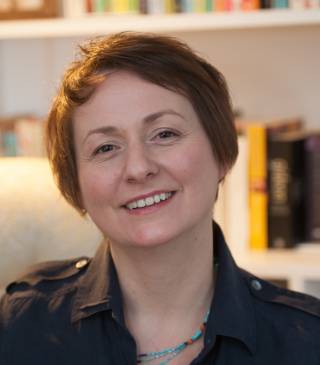Widening access to STEM careers with In2scienceUK – an interview with Dr Anna Barnes
26 April 2019
This month we caught up with UCLH clinical physicist Dr Anna Barnes, who is taking part in a scheme run by charity In2ScienceUK to provide STEM (science, technology, engineering and mathematics) placements for young people from disadvantaged backgrounds.
What does your job involve?
I work in medical imaging, looking after the Positron Emission Tomography-Magnetic Resonance Imaging (PETMRI) scanner at UCH, and I’m also a senior lecturer within the UCL Centre for Medical Imaging. My work is varied but can involve making sure scanners are working optimally, finding ways to improve scanning processes and looking for new biomarkers to track in order to understand a person’s disease better.
Why did you get involved in the In2ScienceUK scheme?
UCL got in touch with me in early 2018 to ask if I’d like to host a student that summer. I was attracted by the chance to give a student from a disadvantaged background the chance to gain experience in working in science, and to encourage them to study at UCL. It was also an opportunity for my team to play the role of mentor to the students, and be a development opportunity for them too. I ended up hosting 2 students in the summer of 2018 – Isra and Nicoli – and I have applied to host an In2Science student this summer too.
What did the students do during their placement last summer?
The students helped my team with a research project we were working on to design equipment for auto-injection of Positron Emission Tomography (PET) radiotracers in PETMRI imaging. Radiotracers are the radioactive compounds we inject into patients prior to scans, and they are what scanners track during scans to reveal information about a person’s condition.
We were looking at auto-injections as a way to ensure there is no variability in the way patients are injected, and to reduce exposure of radiographers to radiation during the injection process. As part of the project, the students built an experiment from scratch, and gained confidence by doing so.
What would you say to researchers thinking about hosting a student?
Definitely take part and apply to host a student! In2Science does all the logistics of finding and preparing students, and offers workshops and support to researchers who haven’t offered placements before.
Do you have any advice for researchers taking part in the scheme?
Think ahead of time about what you want the students to do, and what they can help you with. A project which needs doing – but isn’t time critical and doesn’t require too much specialist knowledge – is a good example of what students can work on. Also, encourage students to meet the rest of your team and ask questions about their work, and ask students to prepare a short presentation on what they have learned as part of the placement. This gives them something to work on during any downtime.
In terms of your broader work, what research are you working on at the moment?
My main research focus, funded by the NIHR, is developing a new method of imaging assessment known as quantitative whole-body diffusion weighted imaging (wb-DWI). Many cancer patients have repeated CT scans to see whether their tumour is shrinking with treatment, but these scans can be insensitive for treatments that do not change the size of a lesion and come with risk of repeated radiation exposure. wb-DWI is a non radiation technique that instead detects changes in cellular composition in the tumour. In order for this treatment assessment method can be adopted widely it needs to be standardised, which is what we’re working on.
To find out more about In2ScienceUK and to apply to host a student in summer 2019, visit http://in2scienceuk.org/, or @In2ScienceUK on Twitter.
 Close
Close


